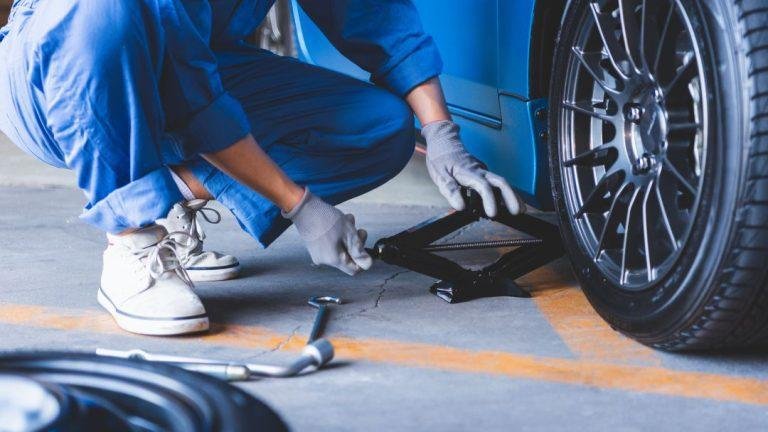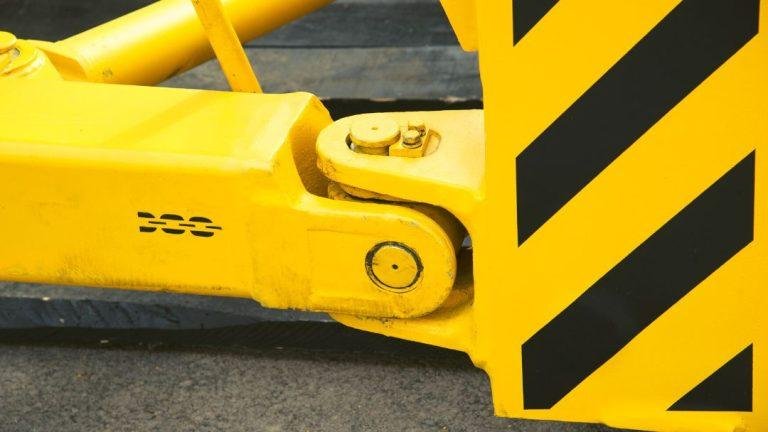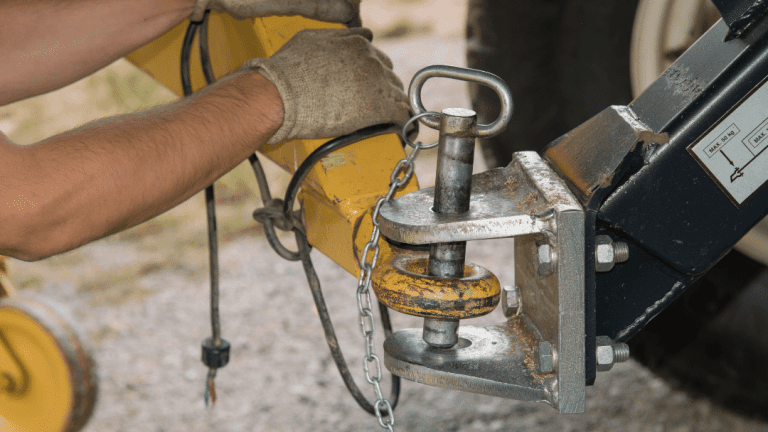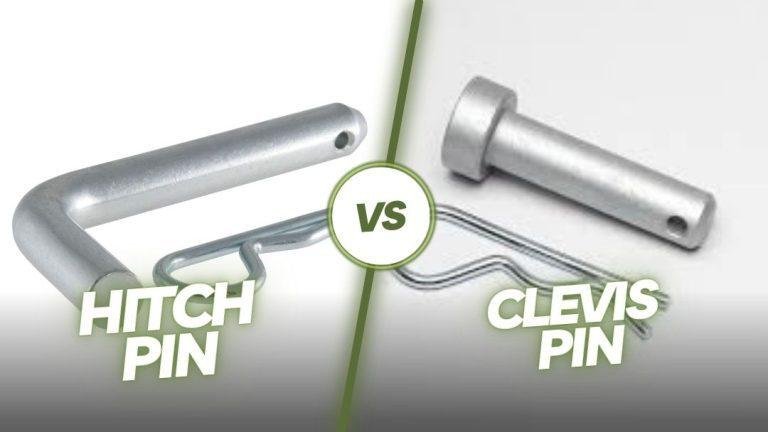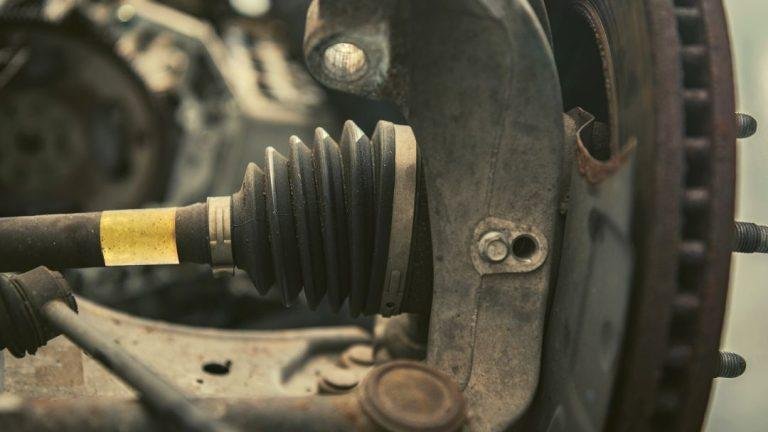Hitch pins and cotter pins are two types of fasteners used in mechanical applications. Hitch pins are solid pins with a round head and a cross-hole, while cotter pins are bent pins with two tines.
Hitch pins are commonly used for quick and secure attachment and detachment, while cotter pins are used for securing bolts and other fasteners.
Understanding Hitch Pins And Cotter Pins
Hitch pins and cotter pins serve different purposes in securing connections. While hitch pins are used to attach trailers and implements to a hitch receiver, cotter pins are primarily used to secure and prevent the accidental removal of components such as bolts and axles.
Understanding the distinctions between these two pins is crucial for ensuring proper connection and safety.
Hitch pins and cotter pins are commonly used fasteners that play an essential role in various industries and applications. Let’s dive into their definitions, basic functions, and usage scenarios.
Definition And Basic Function Of Hitch Pins
- Hitch pins are specialized fasteners designed to secure the connection between a trailer hitch and a towing vehicle.
- They consist of a cylindrical shaft with a handle or a clip on one end and a drilled hole on the other end.
- The basic function of a hitch pin is to keep the trailer hitch securely attached to the towing vehicle, preventing any accidental disconnections during transportation.
Definition And Basic Function Of Cotter Pins
- Cotter pins, also known as split pins or cotter keys, are small metal fasteners that are typically loop-shaped or have a bent design.
- They are inserted through a hole or slot in a bolt, pin, or shaft, and then bent or expanded to secure the assembly in place.
- Cotter pins have two main functions: Preventing the unintentional removal of a pin or bolt and providing a visual indication of proper installation or alignment.
Usage scenarios and industries they are commonly used in:
Hitch Pins:
- Agriculture: Used to attach implements and accessories to tractors, such as plows, rake attachments, or hay balers.
- Automotive: Essential for connecting vehicle trailers to the towing hitch, ensuring safe transportation of cargo or recreational equipment.
- Construction: Frequently employed in heavy machinery, such as excavators, loaders, and skid-steer equipment, for attaching buckets, blades, or other attachments.
- Marine: Used to secure boats or watercraft trailers to towing vehicles, ensuring a secure connection during land transportation.
- Recreational: Enable the attachment of hitch-mounted accessories like bike racks, cargo carriers, or camper trailers to cars, suvs, or trucks.
Cotter Pins:
- Mechanical engineering: Widely used in various mechanical assemblies, ranging from machinery, engines, and industrial equipment to bicycles and motorcycles.
- Automotive: Commonly found in steering systems, suspension components, and brake systems, securing components like ball joints, tie rods, or caliper bolts.
- Aircraft: Essential in aviation for locking critical components, such as control surfaces, landing gear, or engine accessories, ensuring safe and reliable operation.
- Home improvement: Frequently employed in plumbing, furniture assembly, and repairs for securing bolts, fasteners, and hinges.
- Pneumatics and hydraulics: Used in systems that involve fluid pressure and movement, such as hydraulic cylinders, valves, or pneumatic actuators.
These versatile fasteners, with their distinct characteristics and applications, play a vital role in ensuring the stability, safety, and reliability of various mechanical connections across industries.
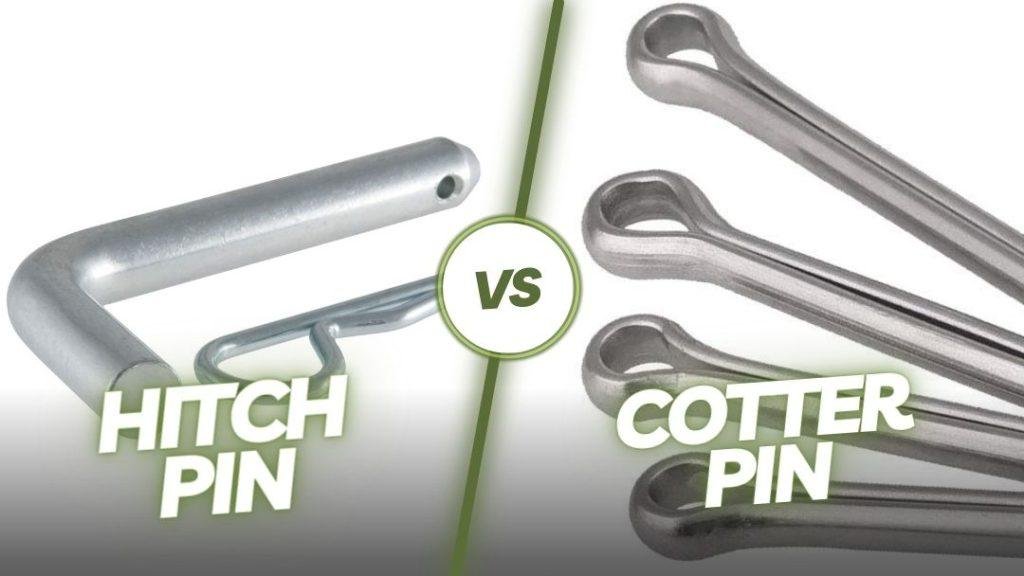
Strength And Durability Comparison
Comparing strength and durability between hitch pins and cotter pins reveals their distinct advantages. Hitch pins offer robustness and reliability for securing heavy loads while cotter pins provide flexibility and easy installation for various applications. Choose the pin that best suits your needs for a secure and long-lasting connection.
Hitch pins and cotter pins are both commonly used fasteners in various applications, including automotive, construction, and agricultural industries. Although they serve similar purposes of securing or attaching components, there are key differences in their strength and durability. Let’s explore these aspects in more detail:
Material Composition Of Hitch Pins And Cotter Pins
- Hitch pins are typically made of hardened steel, providing excellent strength and resistance to bending or snapping under heavy loads.
- Cotter pins, on the other hand, are commonly made of softer, more malleable materials such as stainless steel or zinc-plated steel. While they offer decent strength, they may be more susceptible to bending or shearing under extreme pressure.
Load-Bearing Capacity And Tensile Strength
- Hitch pins are designed to withstand higher load-bearing capacities and tensile forces due to their hardened steel construction. They can securely withstand heavy loads and provide reliable support, making them suitable for applications requiring substantial strength.
- Cotter pins, although not as robust as hitch pins, still offer sufficient load-bearing capacity and tensile strength for many everyday applications. Their slightly flexible nature can help absorb shock or impact forces, making them suitable for lighter loads or situations where some degree of flexibility is desired.
Longevity And Resistance To Wear And Tear
- Due to their hardened steel composition, hitch pins are more resilient and resistant to wear and tear over time. They can withstand repeated use, exposure to harsh conditions, and other environmental factors without significant degradation or loss of strength.
- Cotter pins, being made of softer materials, may be more prone to wear and tear, particularly in demanding or corrosive environments. However, regular maintenance and proper care can extend their lifespan and ensure optimal performance.
Hitch pins are generally more durable and better suited for heavy-duty applications due to their material composition and higher load-bearing capacity. Cotter pins, although less robust, still provide satisfactory strength for many everyday tasks and can offer some flexibility in certain applications.
Consider the specific requirements and demands of your project to determine which fastener is most appropriate for your needs.
Ease Of Use And Installation
The ease of use and installation of a hitch pin compared to a cotter pin makes it a preferred option for securing various hitch-mounted accessories. Its simple design and quick installation process ensure a hassle-free experience for users.
Hitch Pin Design And Features
- Hitch pins are simple and durable devices designed to secure a variety of towing equipment.
- They consist of a shaft, a movable handle, and a clip that holds everything in place.
- The shaft is usually straight and cylindrical, while the handle is typically shaped like a ring or a loop.
- Hitch pins are made from high-quality steel, ensuring strength and long-lasting performance.
- The clip is inserted through a hole in the shaft to prevent accidental disengagement.
Different Types Of Hitch Pins Available
- Standard hitch pins: These are the most common type of hitch pins and come in various sizes to fit different hitch receivers.
- Locking hitch pins: Equipped with a built-in lock mechanism, these provide an added layer of security to prevent theft.
- Bent hitch pins: These pins have a curved shaft, allowing them to fit in tight spaces and secure equipment at different angles.
- Quick-release hitch pins: Designed for easy and rapid installation, these pins feature a push-button release mechanism for convenient use.
How Hitch Pins Are Inserted And Secured
- To insert a hitch pin, align the hole in the hitch receiver with the hole in the trailer hitch or implement being attached.
- Slide the hitch pin through both holes until it protrudes out of the other side.
- Once the pin is in place, slide the movable handle over the exposed end of the pin.
- Finally, secure the hitch pin by inserting the clip through the small hole at the end of the handle, ensuring it locks everything together.
Cotter Pin Design And Features
- Cotter pins, also known as split pins, are a type of fastener made from a single piece of wire.
- They consist of a looped end and two straight legs that are bent at a 90-degree angle.
- Cotter pins are often made from stainless steel or other corrosion-resistant metals to withstand harsh conditions.
- The looped end of the pin allows for easy installation and removal.
Different Types Of Cotter Pins Available
- Standard cotter pins: These are the most commonly used cotter pins and are available in various sizes to accommodate different applications.
- Hairpin cotter pins: These pins are bent into a hairpin-like shape, making them easier to insert and remove.
- Bowtie cotter pins: These specialized cotter pins have a bowtie-shaped loop, which forms a larger opening for easy installation and removal.
How Cotter Pins Are Inserted And Secured
- To insert a cotter pin, pass the looped end through the hole in the fastener or fixture being secured.
- The straight legs of the pin should be bent in opposite directions, perpendicular to the looped end.
- This ensures that the cotter pin remains securely in place, preventing accidental disengagement.
Remember, hitch pins and cotter pins are both essential fasteners used in various applications. Understanding their design, types, and proper installation methods is crucial for ensuring the safety and security of your towing equipment or fastened fixtures.
Flexibility And Versatility
Flexibility and versatility are key factors to consider when deciding between a hitch pin and a cotter pin. Both options offer different benefits, allowing you to choose the best option based on your specific needs and requirements. Whether it’s for securing equipment, towing, or other applications, understanding the differences between hitch pins and cotter pins can help you make an informed decision.
Hitch Pin Applications And Adaptability:
- Hitch pins are commonly used in the automotive industry for securing trailer hitches to vehicles. They offer a convenient and secure way to attach trailer couplers, towing accessories, and other hitch-mounted equipment.
- These pins are also widely used in the agricultural sector, where they are employed to connect implements such as plows, cultivators, and rotary cutters to tractors. Hitch pins provide the necessary strength and stability for smooth operation in various farming applications.
- In addition to the automotive and agricultural industries, hitch pins find utility in other sectors like construction, landscaping, and marine. Their adaptability makes them suitable for a range of scenarios and equipment, ensuring reliable and secure connections.
Uses In Different Industries And Scenarios:
- Automotive: Hitch pins are vital for attaching trailer hitches and towing accessories to vehicles, enabling safe and efficient towing. They provide the necessary strength and stability for various towing scenarios, including hauling trailers, boats, and rvs.
- Agriculture: In the farming industry, hitch pins are used to connect agricultural implements to tractors. From plowing fields to cultivating soil, these pins play a crucial role in ensuring the efficient operation of farm equipment.
- Construction: Hitch pins find application in the construction industry where they are used to secure attachments like buckets, blades, and rippers to construction machinery. They ensure that these attachments stay securely in place during heavy-duty operations.
- Landscaping: Hitch pins are valuable in landscaping tasks such as attaching mowers, spreaders, and tillers to lawn tractors. With their reliability and ease of use, hitch pins facilitate efficient landscaping maintenance.
- Marine: Hitch pins are commonly used in the marine industry to secure boat trailers to vehicles, ensuring reliable transportation to and from the water. They provide a secure connection for safe and hassle-free towing of boats.
Compatibility With Various Hitch Receivers And Attachments:
- Hitch pins are designed to be compatible with different hitch receivers, allowing for easy installation and removal. This compatibility ensures that hitch pins can be used with various types of vehicles and towing setups, providing versatility and convenience.
- Furthermore, hitch pins are designed to work with a range of hitch-mounted attachments. They can be used to secure trailer couplers, ball mounts, receiver tubes, and other hitch accessories. This compatibility allows for the seamless interchangeability of different attachments, enhancing the versatility of hitch pins in various applications.
Cotter Pin Applications And Adaptability:
- Cotter pins are widely used for fastening and securing purposes across different industries. They are commonly employed to prevent the unintended disassembly or movement of components.
- These pins offer excellent adaptability and are suitable for securing fasteners, linkages, and machinery parts, ensuring safety and reliability in a wide range of applications.
- Cotter pins are also commonly used in mechanical and automotive equipment, ensuring that critical components remain securely fastened during operation.
Uses In Different Industries And Scenarios:
- Mechanical: Cotter pins find extensive use in mechanical applications, securing fasteners such as bolts and clevis pins. They prevent unintentional loosening or separation of components, ensuring the proper functioning of machinery.
- Automotive: Cotter pins are utilized in the automotive industry to secure various components such as suspension parts, brake systems, and steering linkages. They provide an extra layer of safety, preventing critical components from becoming loose or detached during vehicle operation.
- Manufacturing: In the manufacturing sector, cotter pins play a crucial role in securing machine parts and maintaining the integrity of assemblies. They provide a simple yet effective solution for preventing unwanted movement or disassembly of components.
- Marine: Cotter pins are widely used in the marine industry for fastening critical components on boats and ships. They ensure the secure attachment of rigging hardware, sailboat fittings, and other marine equipment.
- Infrastructure: Cotter pins are also utilized in various infrastructure projects, such as securing guardrails, fences, and other structural elements. Their adaptability allows for the reliable fastening of components in different construction scenarios.
Compatibility With Various Fastening Mechanisms:
- Cotter pins offer compatibility with a variety of fastening mechanisms, making them suitable for diverse applications. They can be used with bolts, clevis pins, and other fasteners that feature a hole or slot for insertion.
- Their ease of use and versatility enable cotter pins to effectively secure different types of fasteners, ensuring their stability and preventing unintentional loosening or detachment.
- The ability of cotter pins to work with different fastening mechanisms makes them a preferred choice in various industries, as they offer a reliable and simple solution for keeping components securely fastened.
Safety And Reliability
Discover the ultimate combination of safety and reliability with the hitch pin versus cotter pin. These sturdy fasteners provide secure connections, ensuring peace of mind during your towing adventures. Trust in their durability to keep your equipment and cargo in place.
Hitch pins and cotter pins are commonly used in various applications to secure equipment and ensure safe and reliable connections. Understanding the potential risks and hazards associated with each pin type is crucial to maintain the integrity of the attachment and prevent accidents.
Potential Risks And Hazards Associated With Each Pin Type:
- Hitch pin:
- Misalignment: Inadequate alignment during pin insertion can lead to weakened connections and potential equipment detachment.
- Insufficient pin size: Using a hitch pin that is too small for the intended load may result in pin failure, causing equipment to become dislodged or loose.
- Pin slippage: Continuous vibration or movement can cause hitch pins to loosen or slip out of place over time, jeopardizing the stability of the attachment.
- Cotter pin:
- Shear stress: Excessive shear stress on cotter pins due to heavy loads or sudden impact can result in pin fracture or bending, compromising the connection’s strength.
- Incorrect installation: Improperly installing cotter pins, such as not aligning them correctly, can lead to premature wear, loosening, or detachment.
- Pin integrity: Over time, cotter pins may suffer from corrosion or degradation, making them more susceptible to failure.
Measures To Ensure Secure Attachment And Prevent Accidents:
- Hitch pin:
- Choose the right size: Selecting the appropriate hitch pin based on the equipment’s weight and specifications ensures a secure and reliable connection.
- Proper alignment: Ensure accurate alignment when inserting the hitch pin to maintain the integrity of the attachment and prevent misalignment-related accidents.
- Apply safety measures: Using hitch pin clips or secondary locking systems can provide an extra layer of security, preventing accidental pin removal.
- Cotter pin:
- Verify pin size: Confirm that the cotter pin’s diameter and length correspond to the requirements of the attachment, avoiding pin failure due to inadequate sizing.
- Correct installation: Align the cotter pin properly and ensure it is inserted securely, creating a dependable connection that can withstand various stresses and loads.
- Regular inspections: Perform periodic inspections to detect any signs of wear, deformation, or corrosion on the cotter pin, replacing it if necessary.
Common Maintenance Practices For Hitch Pins And Cotter Pins:
- Hitch pin:
- Lubrication: Apply appropriate lubrication to the hitch pin and the connection point to reduce friction, enhancing the pin’s longevity and performance.
- Cleanliness: Regularly clean hitch pins and removal mechanisms, removing dirt and debris that can hinder smooth operation and potentially cause damage.
- Replacement: Inspect hitch pins periodically and replace them when signs of wear, bending, or corrosion become evident.
- Cotter pin:
- Corrosion prevention: Coat cotter pins with suitable anti-corrosion materials or paint to protect them from rust and degradation, ensuring their long-term reliability.
- Periodic checks: Regularly inspect cotter pins for signs of damage, such as bending or elongation, replacing them promptly if any deficiencies are detected.
- Store properly: Store cotter pins in a dry, clean, and well-organized environment, preventing exposure to moisture and the possibility of accelerated corrosion.
By understanding the potential risks, employing appropriate measures, and practicing regular maintenance, you can enhance the safety and reliability of both hitch pins and cotter pins. These precautions play a vital role in mitigating accidents and ensuring secure equipment attachments across various applications.
Cost Comparison And Accessibility
Easily compare the cost and accessibility between hitch pins and cotter pins for your towing needs. Discover the advantages and disadvantages of each option to make an informed decision.
Hitch pins and cotter pins are both essential fasteners used in various applications, such as securing trailers, tow bars, and agricultural equipment. When it comes to choosing between the two, considering the cost and accessibility can help shape your decision.
Let’s delve into the price range, availability, and cost-effectiveness of hitch pins and cotter pins.
Price Range For Hitch Pins And Cotter Pins:
- Hitch pins:
- Standard hitch pins typically range from $5 to $20, depending on the size and material used.
- Heavy-duty hitch pins, designed for increased strength and durability, can cost between $15 and $40.
- Adjustable hitch pins with multiple usable lengths may have a higher price range, ranging from $20 to $60.
- Cotter pins:
- Simple cotter pins usually cost around $1 to $5 per pack, offering an affordable option for basic applications.
- More specialized cotter pins, such as hairpin cotter pins or duplex cotter pins, may range from $5 to $15, depending on the size and complexity.
Availability And Accessibility In The Market:
- Hitch pins:
- Hitch pins have become widely available due to their extensive use in the automotive and agricultural industries. You can easily find them at local hardware stores, home improvement centers, and online retailers.
- Various sizes, materials, and designs of hitch pins are accessible, making it relatively simple to find the right option for your needs.
- Cotter pins:
- Cotter pins are also readily available in the market, with a range of sizes and types catering to different applications. You can find them at hardware stores, marine supply stores, and online marketplaces.
- However, it’s important to note that some specialized or less common cotter pins may be harder to locate, requiring more effort and potentially higher costs to obtain.
Cost-Effectiveness Considering Longevity And Performance:
- Hitch pins:
- When it comes to cost-effectiveness, hitch pins offer durability and reliability. Made from sturdy materials like steel or stainless steel, they are designed to endure heavy loads and withstand various weather conditions.
- Hitch pins often have a longer lifespan compared to cotter pins, reducing the need for frequent replacements and potential downtime.
- Cotter pins:
- Cotter pins, while generally more affordable, may not offer the same level of strength and longevity as hitch pins. They are typically made from softer materials like brass or mild steel, which can be prone to bending or breaking under excessive loads.
- However, for light to moderate applications or temporary fastenings, cotter pins can still provide adequate performance at a lower cost.
When considering the cost and accessibility of hitch pins and cotter pins, it’s crucial to evaluate your specific needs, the intended application, and the desired level of durability. While hitch pins may have a higher initial cost, they can offer long-term cost savings through their robustness and longer lifespan.
Cotter pins, on the other hand, provide an affordable option for simpler applications or short-term fastenings. Ultimately, selecting the right pin for your needs involves striking a balance between cost, accessibility, and performance.
Choosing The Right Pin For Your Needs
Choosing the right pin for your needs can be a crucial decision. Understanding the differences between a hitch pin and a cotter pin is essential in ensuring a secure and reliable connection for your hitch application.
Factors To Consider When Selecting Between Hitch Pins And Cotter Pins:
- Durability: Hitch pins are typically made of steel or stainless steel, providing excellent strength and durability. Cotter pins, on the other hand, are generally made of softer materials like bronze or brass, making them less durable in heavy-duty applications.
- Ease of installation: Hitch pins are designed for quick and easy installation, requiring only a simple push or pull motion. Cotter pins, however, involve more steps as they need to be inserted through the hole and then bent to secure the pin in place.
- Security: Hitch pins offer a secure and reliable locking mechanism, minimizing the risk of accidental detachment. Cotter pins, although effective in proper installation, may have a higher possibility of disengaging if not installed correctly or if subjected to external forces.
- Size options: Hitch pins come in various sizes, allowing for compatibility with different hitch receiver sizes and equipment. Cotter pins have limited size options and may be more suitable for smaller applications.
- Price: Hitch pins are generally more affordable compared to cotter pins, making them a cost-effective option for many users.
Application-Specific Considerations And Requirements:
- Trailer towing: When towing heavy loads or trailers, hitch pins are often the preferred choice due to their strength, durability, and secure locking mechanism.
- Agricultural equipment: In the agricultural industry, cotter pins are commonly used for securing various components such as pto shafts, tillers, and cultivators due to their ease of installation and frequent adjustments.
- Marine applications: In marine environments, where saltwater corrosion can be a concern, stainless steel hitch pins are recommended for their resistance to rust and corrosion.
- Recreational activities: For recreational applications such as bike racks or hitch-mounted accessories, hitch pins provide a secure and convenient option that requires minimal installation time.
- Manufacturing and industrial machinery: Depending on the specific machinery and component requirements, both hitch pins and cotter pins may be used. It is crucial to consider factors such as load capacity, vibration resistance, and maintenance requirements.
Expert Recommendations And Best Practices:
- Follow the manufacturer’s recommendations when selecting between hitch pins and cotter pins, as they can provide valuable insights specific to the equipment and application.
- Consider the load capacity and weight limitations of both hitch pins and cotter pins, ensuring they meet or exceed the requirements of the intended application.
- Regularly inspect and maintain hitch pins or cotter pins to ensure they are in good working condition and securely fastened.
- Consider additional safety measures such as using secondary securing devices like safety chains or locking clips for added peace of mind.
- Consult with industry professionals or equipment manufacturers to receive expert advice tailored to your specific needs and requirements.
Remember, choosing the right pin for your needs involves considering factors such as durability, ease of installation, security, size options, and the application’s specific requirements. Always prioritize safety and follow expert recommendations to ensure a reliable and secure connection for your equipment.
Frequently Asked Questions For Hitch Pin Vs Cotter Pin
What Is The Difference Between A Lynch Pin And A Cotter Pin?
A lynch pin and a cotter pin are both used to secure components in place, but they differ in design. A lynch pin is a cylindrical pin with a ring attached to one end, while a cotter pin is a straight pin with two prongs at the end.
Lynch pins are easier to insert and remove, often used in quick-release applications like trailer hitches. Cotter pins require bending the prongs to secure them, making them more permanent and sturdy, commonly used in machinery and automotive applications. The key difference between the two lies in the way they are installed and their level of security.
Lynch pins are quick and convenient, while cotter pins offer a more robust hold.
What Is A Hitch Pin?
A hitch pin is a type of fastener used to secure a trailer hitch to a vehicle’s receiver. It is a small but essential component that plays a crucial role in ensuring the safe and secure attachment of a trailer to a vehicle.
Hitch pins are typically made of sturdy materials such as steel, and they come in various sizes to accommodate different hitch and receiver dimensions. To use a hitch pin, it is inserted through the holes on the trailer hitch receiver and the hitch itself, and then secured with a clip or lock to prevent it from coming loose during towing.
Hitch pins provide a simple yet effective solution for connecting trailers to vehicles, making them a vital accessory for anyone who frequently tows trailers or hauls heavy loads.
What Is The Difference Between A Hitch Pin And A Linch Pin?
A hitch pin and a linch pin are similar in function but differ in design. A hitch pin is a type of fastener used to secure the attachment of a trailer, caravan, or other towed vehicle to a towing vehicle.
It typically consists of a straight, cylindrical pin with a handle or knob on one end. On the other hand, a linch pin is a removable pin used to secure a wheel or other rotating part on an axle. It features a loop or ring on one end and a pointed pin on the other.
The loop is inserted through a hole, and the pin is then inserted through the loop to lock it in place. Unlike a hitch pin, a linch pin is best suited for applications where the pin needs to rotate freely.
Ultimately, the choice between a hitch pin and a linch pin depends on the specific use and requirements of the equipment being used.
What Is Better Than A Cotter Pin?
A hitch pin is a better alternative to a cotter pin. It is more secure and reliable.
Conclusion
After comparing the hitch pin and cotter pin, it is clear that both serve essential roles in securing trailer hitch connections. The hitch pin offers convenience and ease of use, allowing for a quick and secure attachment. On the other hand, the cotter pin provides added stability and protection against accidental detachment.
Ultimately, the choice between the two will depend on individual needs and preferences. It is important to consider factors such as the type of hitch, load capacity, and frequency of use when making this decision. Whether you opt for the simplicity of the hitch pin or the added security of the cotter pin, both options can effectively ensure a safe and reliable towing experience.
By understanding the differences and benefits of each, you can make an informed choice that suits your specific requirements. So, next time you’re hitching up your trailer, make sure you choose the right pin for the job.

